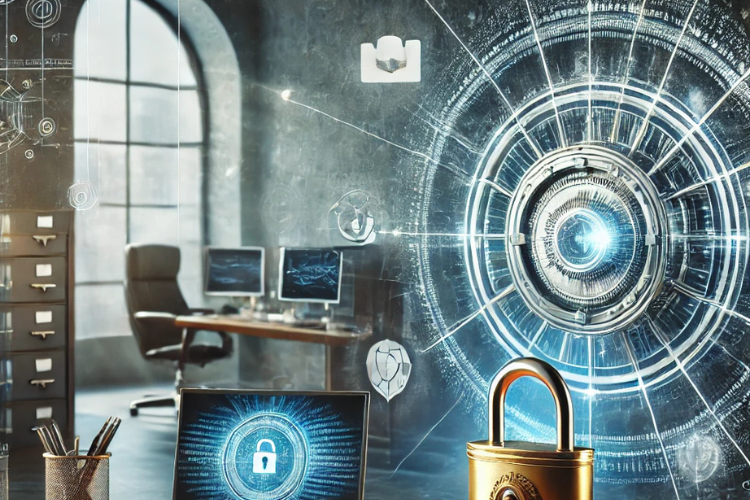Introduction
Businesses today chase the latest and greatest technology. Flashy new tools seem exciting, but they often come with hidden risks. What if the best choice isn’t the trendiest? What if the most reliable technology is actually the most “boring”?Boring technology is stable, well-documented, and widely used. It doesn’t have cutting-edge appeal, but it works. And when running a business, reliability beats excitement. This blog explores why choosing proven technology can save time, money, and frustration.
1. The Hidden Power of Boring Technology
Boring technology isn’t outdated or useless. It’s the kind of tech that has been around for years and continues to deliver results. These tools don’t make headlines, but they form the backbone of successful companies.
Think of databases like PostgreSQL, programming languages like Python, or web frameworks like Django. These have been around for decades, yet businesses still rely on them. The reason? They work. They offer stability, efficiency, and predictability.
Using tried-and-tested technology reduces risks. Unlike newer alternatives, boring tech has already gone through years of refinement. Businesses that adopt it benefit from its maturity. There are fewer surprises, making operations smoother and more predictable.
2. Proven Reliability and Stability
Seasoned developers stick with reliable tools for a reason. Boring technology has been tested in real-world applications. It has been debugged, refined, and improved over time.
New tech often comes with bugs, missing features, and limited documentation. In contrast, tried-and-true solutions offer stability. They reduce downtime and unexpected failures. This makes them ideal for mission-critical systems where reliability matters.
Reliability isn’t just about performance. It also ensures continuity. Businesses that depend on stable technology avoid the disruption caused by frequent changes. They don’t have to constantly migrate to new platforms, which can be expensive and time-consuming.
3. Striking a Balance: Innovation vs. Practicality
Innovation is essential, but not at the cost of practicality. Many businesses jump on the latest tech trends without considering long-term viability. Just because something is new doesn’t mean it’s better.
Businesses must strike a balance. They should explore new technologies while maintaining a solid foundation with proven solutions. Adopting new tools should be a calculated decision, not a reaction to hype.
A smart approach involves testing new tech in controlled environments before full adoption. Companies should assess the real benefits and weigh them against the risks. In many cases, sticking with established solutions is the better choice.
4. Community Support: A Lifeline for Developers
One of the biggest advantages of established technology is community support. When problems arise, developers can find answers quickly. Large communities contribute to forums, create documentation, and provide troubleshooting tips.
In contrast, new technology often lacks this support. If you run into issues, finding solutions can be difficult. This delays development and increases costs. With boring tech, solutions are just a search away.
An active community also means faster improvements. Bugs get fixed quickly, new features are added based on real-world feedback, and extensive knowledge bases grow over time. This makes development more efficient and less stressful.
5. The Cost-Effectiveness of Boring Technology
New technology often comes with high costs. Licensing fees, training, and maintenance expenses add up. Boring technology, on the other hand, is cost-effective.
Because these tools are widely used, there’s an abundance of skilled developers. Businesses don’t need to invest heavily in training. Additionally, these technologies are optimized, reducing operational costs. In short, boring tech saves money.
Cost savings extend beyond development. Established technology reduces the likelihood of expensive failures. It minimizes downtime, decreases the need for constant updates, and helps businesses maintain a stable infrastructure.
6. Faster Implementation and Time-to-Market
Speed matters in business. The faster a company launches its product, the better its competitive advantage. Boring technology speeds up development.
Well-documented and widely used tools allow teams to build and deploy quickly. Developers don’t waste time learning new frameworks. Instead, they focus on delivering results. This efficiency helps businesses bring products to market faster.
Companies that prioritize speed benefit from boring technology. They can roll out updates, fix bugs, and scale their products more efficiently than those struggling with the learning curve of newer technologies.
7. Scaling with Ease: Hiring and Team Growth
Finding skilled developers for cutting-edge technology is tough. Many new tools have limited adoption, making hiring difficult. Boring technology solves this problem.
Since these tools have been around for years, many developers are already proficient in them. This makes scaling teams easier and more efficient. Businesses don’t need to invest in specialized training. Instead, they can focus on growth.
Hiring becomes faster and more cost-effective. Established technologies have well-defined skill sets, making it easier to assess potential candidates. This helps businesses maintain strong teams without unnecessary hiring challenges.
8. Security and Long-Term Viability
Security is another overlooked advantage of boring technology. Well-established tools have undergone years of scrutiny. Their vulnerabilities have been identified and patched, making them safer than newer, untested alternatives.

Security isn’t just about patching vulnerabilities. It also involves understanding how a technology behaves under pressure. Boring tech has proven itself in high-stakes environments, making it a safer choice for businesses that handle sensitive data.
Long-term viability is another factor. Businesses that rely on new technology risk having to switch platforms if the tech becomes obsolete. Boring technology offers longevity. It has a track record of staying relevant, ensuring businesses don’t have to constantly adapt to shifting trends.
Conclusion
Choosing boring technology isn’t about avoiding innovation. It’s about making smart, strategic decisions. Reliable tools save time, reduce costs, and ensure stability. Businesses need solutions that work, not just ones that look impressive.
Startuphakk emphasizes efficiency, reliability, and long-term success. By choosing boring technology, businesses can achieve all three. Don’t fall for hype—pick what works and keeps working. In the end, boring technology isn’t just practical; it’s the foundation of sustainable growth.




